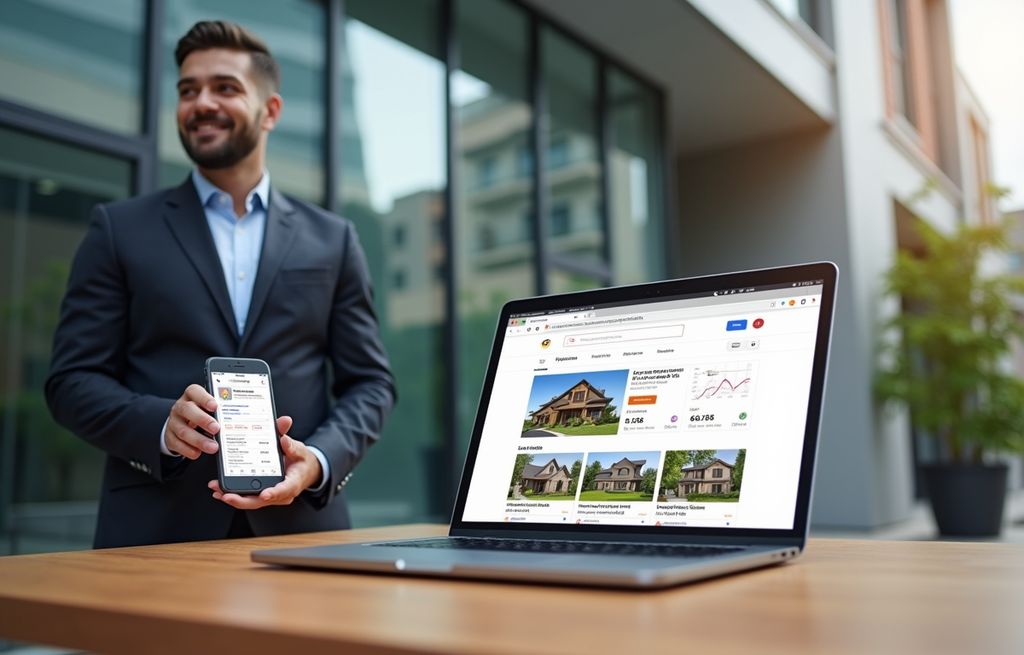Effective Local SEO Strategies for Small Businesses


Effective Local SEO Strategies for Small Businesses
For small businesses serving specific geographic areas, local search engine optimization (SEO) is not just a marketing tactic it's an essential business strategy. With 46% of all Google searches having local intent and 88% of consumers who conduct a local search on their smartphone visiting a related store within 24 hours, the potential impact of local SEO on your business cannot be overstated.
Table of Contents
Understanding Local SEO
Local SEO focuses on optimizing your online presence to attract more business from relevant local searches. These searches take place on Google and other search engines, with users looking for businesses, products, or services in their area.
How Local Search Differs from Regular SEO
While traditional SEO focuses on ranking for relevant searches nationally or globally, local SEO emphasizes geographic components:
- Geographic search terms: Searches including "near me," city names, or zip codes
- Map pack results: The prominent map with three local business listings that appears in many local searches
- Different ranking factors: Greater emphasis on Google Business Profile, local citations, and proximity
Why Local SEO Matters for Small Businesses
The statistics speak for themselves:
- 97% of people learn more about a local company online than anywhere else
- 92% of consumers choose businesses on the first page of local search results
- 78% of location-based mobile searches result in an offline purchase
For small businesses with physical locations or service areas, local SEO provides a targeted approach to reach potential customers at the exact moment they're looking for your products or services.
Essential Local SEO Strategies
1. Optimize Your Google Business Profile
Your Google Business Profile (formerly Google My Business) is the cornerstone of your local SEO strategy.
Optimization checklist:
- Complete all information: Business name, category, address, phone number, website, hours
- Add high-quality photos: Exterior, interior, products, team members (update regularly)
- Write a compelling business description: Include relevant keywords naturally
- Select primary and secondary categories: Be as specific as possible
- Add products and services: List what you offer with descriptions and prices if applicable
- Create Google Posts: Share updates, offers, and events regularly
- Answer questions: Monitor and respond to questions in the Q&A section
2. Ensure NAP Consistency
NAP (Name, Address, Phone Number) consistency across the web is crucial for local search rankings.
Implementation steps:
- Audit your citations: Check business directories, review sites, and social platforms
- Correct discrepancies: Update outdated or incorrect information
- Use a consistent format: Keep the exact same spelling, abbreviations, and punctuation
- Consider citation services: Tools like BrightLocal or Yext can help manage listings
3. Build Local Citations
Local citations are mentions of your business on other websites, particularly in business directories.
Citation building strategy:
- Focus on quality over quantity: Prioritize authoritative, relevant directories
- Target industry-specific directories: Find directories specific to your business type
- Pursue local directories: Chamber of commerce, local business associations, etc.
- Maintain consistency: Use the same business information across all citations
4. Develop a Review Generation Strategy
Reviews significantly impact both your rankings and customers' decisions to visit your business.
Review strategy elements:
- Create a simple process: Make it easy for customers to leave reviews
- Ask at the right time: Request reviews when customers are most satisfied
- Respond to all reviews: Address both positive and negative feedback professionally
- Incorporate reviews into operations: Use feedback to improve your business
5. Optimize Your Website for Local Search
Your website needs specific optimizations to rank well in local searches.
Website optimization tactics:
- Create location-specific pages: Develop unique pages for each location you serve
- Include local keywords: Incorporate city names and neighborhoods naturally
- Add a Google Map: Embed a map showing your location
- Optimize meta data: Include location terms in titles and descriptions
- Create local content: Develop blog posts and resources relevant to your local area
- Implement schema markup: Use LocalBusiness schema to help search engines understand your business
6. Build Local Backlinks
Backlinks from relevant local websites signal your business's authority to search engines.
Local link building approaches:
- Sponsor local events: Support community events for both exposure and backlinks
- Join local business associations: Membership often includes a directory listing
- Partner with complementary businesses: Create mutually beneficial relationships
- Seek local press coverage: Develop newsworthy stories about your business
- Participate in community initiatives: Volunteer work often leads to recognition and links
Advanced Local SEO Tactics
1. Leverage Structured Data Markup
Structured data helps search engines understand your content better and can lead to enhanced search results.
Implementation focus:
- LocalBusiness schema: Include address, phone, hours, and other business details
- Review schema: Highlight customer ratings and reviews
- Product schema: Showcase your products with prices and availability
- Event schema: Promote upcoming events at your location
2. Optimize for Voice Search
With the growing use of voice assistants, optimizing for voice search is increasingly important.
Voice search optimization:
- Focus on conversational keywords: Target phrases people actually speak
- Answer common questions: Create FAQ content addressing typical customer queries
- Optimize for featured snippets: Structure content to appear in position zero
- Ensure mobile optimization: Voice searches predominantly happen on mobile devices
3. Implement a Mobile-First Approach
Mobile optimization is critical for local SEO success.
Mobile optimization elements:
- Responsive design: Ensure your site works well on all device sizes
- Fast loading speed: Optimize images and minimize code
- Easy navigation: Make menus and buttons thumb-friendly
- Click-to-call functionality: Allow users to call with one tap
- Mobile-friendly forms: Simplify forms for mobile completion
4. Create Location-Specific Content
Developing content specifically for your local audience can significantly boost your local SEO.
Content ideas:
- Local guides: Create resources about your area
- Community spotlights: Highlight local events, businesses, or landmarks
- Local case studies: Share success stories from local customers
- Area-specific offers: Develop promotions targeted to local neighborhoods
- Local news commentary: Provide your perspective on local developments
Measuring Local SEO Success
Key Performance Indicators
Tracking the right metrics helps you understand the effectiveness of your local SEO efforts.
Essential metrics:
- Google Business Profile insights: Views, searches, actions, direction requests
- Local ranking positions: Track positions for key local search terms
- Local organic traffic: Website visitors from your target geographic areas
- Phone calls and direction requests: Direct indicators of local search success
- Conversion rates from local traffic: Ultimate measure of local SEO ROI
Tools for Local SEO Tracking
Several tools can help you monitor and improve your local SEO performance.
Recommended tools:
- Google Business Profile Insights: Track how customers find and interact with your listing
- Google Search Console: Monitor local search performance and issues
- Google Analytics: Analyze website traffic from local sources
- BrightLocal: Track local rankings and manage citations
- Moz Local: Monitor and improve local presence
Common Local SEO Challenges and Solutions
Managing Multiple Locations
Businesses with several locations face unique local SEO challenges.
Multi-location strategies:
- Create individual location pages: Develop unique, detailed pages for each location
- Set up separate Google Business Profiles: Maintain distinct profiles for each location
- Localize content: Customize content for each location's specific audience
- Implement location-specific schema: Use proper markup for each location
Competing in Saturated Markets
Some local markets have intense competition for top rankings.
Competitive differentiation:
- Find niche specialties: Identify and promote your unique offerings
- Target long-tail local keywords: Focus on more specific search terms
- Emphasize reviews and ratings: Work to outperform competitors in quality and quantity
- Create superior local content: Develop more valuable resources than competitors
Recovering from Local SEO Penalties
Various issues can negatively impact your local search visibility.
Recovery approaches:
- Address Google Business Profile suspensions: Resolve policy violations promptly
- Fix NAP inconsistencies: Correct conflicting business information
- Remove duplicate listings: Consolidate multiple business profiles
- Address negative reviews: Respond professionally and resolve issues
Conclusion
Local SEO represents one of the most valuable marketing investments for small businesses serving specific geographic areas. By implementing these strategies, you can increase your visibility to potential customers at the exact moment they're searching for your products or services.
Remember that local SEO is not a one-time effort but an ongoing process. Search algorithms evolve, competitors adjust their strategies, and your business itself may change. Regular monitoring and refinement of your local SEO approach will ensure continued success in connecting with your local customer base.
By focusing on these proven local SEO strategies, small businesses can level the playing field with larger competitors and achieve significant growth through improved local search visibility.
Ready to Transform Your Business?
Unlock growth with AI-driven efficiency and targeted Local SEO. Let's build your future, together.

